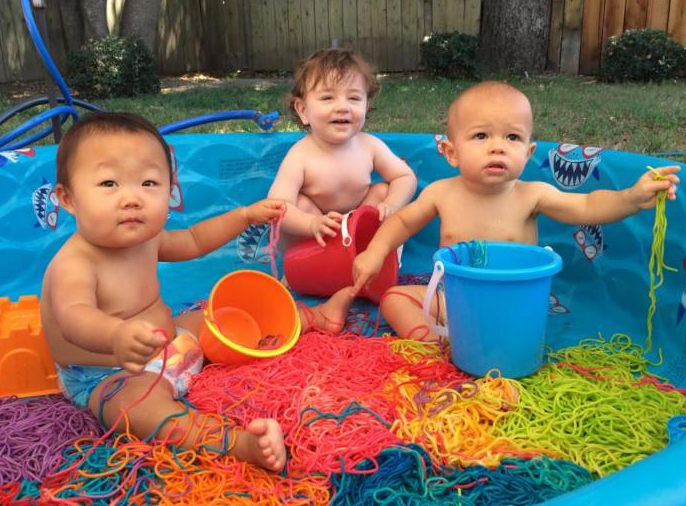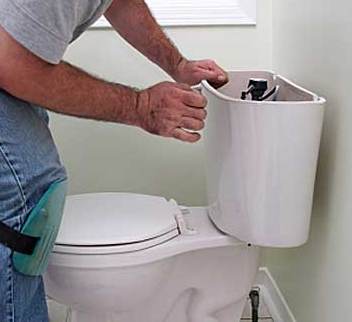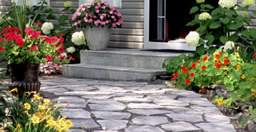Beat the Drought, Inside and Out
July 30, 2015 by
Filed under Blog
Bridge Over Troubled Waters
If the predictions are right, the drought could be over soon. For now, get through it by only watering enough to keep certain special plants alive, skip planting any fall veggies, and only water at night to reduce evaporation. If you’re still washing down walks and driveways, please sweep or blow them off instead!
Turn It Off!
If you’ve been in the military or done some serious camping, you know that keeping showers very short, or even turning the water off completely while soaping and scrubbing, saves a lot of water. Keeping the sink faucet off while you brush your teeth or shave can save hundreds of gallons of water every month. If you have a double kitchen sink or a dish tub, it’s easy to do dishes by hand: Soap them up in one basin, rinse them off in the other. It uses a lot less water than running the dishwasher. Another place to conserve is by using your washing machine less often, and by making sure the water level is set to match the size of the laundry load.
 Pass It On!
Pass It On!
Teach the kids to conserve too by turning off faucets tightly and not wasting water during playtime. Squirt guns are a good alternative to filling up a whole wading pool. Staying out of the hot sun and choosing games that don’t involve water at all are the best ways to handle the heat and conserve.
A fun and safe way to keep toddlers cool and busy is a pasta pool party: Cook several pots of spaghetti, add food coloring and a little veggie oil to prevent sticking, then put the noodles in the fridge. Combine the cold pasta and the hot tots in a clean wading pool and everybody will be entertained for hours!
Pet Project
Get your pets involved too! Wash your dog (or your car!) outside on your thirsty lawn. If you’ve got one of those cats that insists on drinking out of a dripping tap, get them a recirculating water fountain instead. If you drop an ice cube on the floor, toss it into your pet’s water bowl-it helps keep them cooler on hot days too. Dirty fish tank water is full of nutrients that plants love, so when you clean the tank, collect it in a bucket for your thirsty plants.
If You Have a Pool
Keep the cover on your pool to help stop evaporation, and keep the water level lower so that less of it gets splashed out. Remember to turn off slides, waterfalls, and fountains when not needed. If you’ve done all this and your water level still seems to be dropping a lot, you may have a leak that needs attention.
Potty Talk
Not so long ago, low-flow bathroom fixtures got a bad name, but the new generation has fixed those issues with better designs. Installing low-flow shower heads and toilets will save hundreds, possibly thousands, of gallons every year in your home.
Toilets in particular are made much differently, with larger valves, different shapes of pipes, and even pressure-assisted flushes that  use the same small amount of water but with much more force to get the job done. You can even choose the type of flush: Liquid or solid. You may have seen some of these new designs in store bathrooms, and they are available for your home too.
use the same small amount of water but with much more force to get the job done. You can even choose the type of flush: Liquid or solid. You may have seen some of these new designs in store bathrooms, and they are available for your home too.
If you don’t want to install a new toilet, be sure the old one isn’t a sneaky leaker. Squirt some food dye into the toilet tank and see if any of it ends up in your bowl. If it does, you’ve got a leaky valve that’s letting gallons of water go right down the drain.
Of course, there’s always the old-fashioned method of saving toilet water: “If it’s yellow, let it mellow, if it’s brown, flush it down.”
Out With the Old
This is a good time to replace old, inefficient appliances with new ones that conserve water and power. Your dishwasher, water heater, washing machine, and even your refrigerator may be sources of waste if they’re old and/or leaky.
Let The Fix-It Professionals help replace your old, leaky appliances and bathroom fixtures, replace or fix toilets, change out or repair bathroom fixtures, and check for any leaks indoors or out. Call us today to schedule an appointment. Think of all the money you could save on your electricity and water bills!
Read on for our latest special.
?>
Hot, Dry, Scorched. How Do You Protect Your Garden and Home?
July 9, 2015 by
Filed under Blog
The summer heat, combined with our current drought, makes everything seem even hotter, especially when you can’t just turn on the outdoor misting system, or let the kids run through the sprinklers.
Let’s start outside with ways of protecting your house and garden from the heat, then move inside with more ideas for your home next time.
Trees: A Shady Solution
The best way to prevent sun damage is to stop it in the first place. Big shade trees are great if you happen to have them, but don’t plant new ones now, it’s just too hot. Early spring is the best time to plant new trees, so you have plenty of time to daydream and talk to a nursery professional or arborist about what trees will work best for your yard. Plan ahead and think about where those big roots could end up. Tree roots that clog your sewer line or push up your pavement can mean expensive repairs down the road, so be careful where you plant, and what kind of trees you pick.
Roof-Top Barbecue!
Preventing heat from radiating through your roof is important too. A lot of people like the look of dark-colored shingles, but they absorb a lot more heat than lighter-colored ones do. Dark roofs can reach temperatures of nearly 200 degrees – hot enough to cook an egg! You sure don’t want a frying pan for a roof, so replace it as soon as you can to help lower cooling bill. If you can’t replace it right away, try painting it with a white reflective roof coating until you can.
Make Your Own Shade
Another solution for the patio and garden is shade cloth. There are different kinds that block different amounts of sun, up to 90%, and it comes in several colors. You can buy it in pre-cut sizes or by the yard, but you’ll need to stitch up the edges and add hanging grommets if you get it by the yard. If you have a veggie garden, shade cloth can prevent sunburn on your tomatoes and peppers. You can also use shade cloth as a temporary awning over your hottest windows to block the heat from coming inside. You’ll probably need to install posts with hooks to get the shade cloth just where you want it. As the seasons change, you can change the type of cloth, and then remove it completely in winter.
Let It Go
If some plants can’t take the heat, and you can’t spend the water on them, it may be time to say goodbye. Summer flowers can be replaced, so let those go and only water your more expensive shrubs, and then only enough to keep them going until fall. You may  have to settle for fewer roses or apples this year, and shrink the size of that lawn, or tear out the lawn completely and replace it with drought-friendly landscaping next spring.
have to settle for fewer roses or apples this year, and shrink the size of that lawn, or tear out the lawn completely and replace it with drought-friendly landscaping next spring.
As always, The Fix-It Professionals are here to help with your home and garden needs, including shade cloth wrangling, and installing more efficient ways of getting water to your plants. Give us a call today to schedule an appointment so you, and your yard, don’t have to keep baking in the summer sun!
Read on for our latest special.
?>
